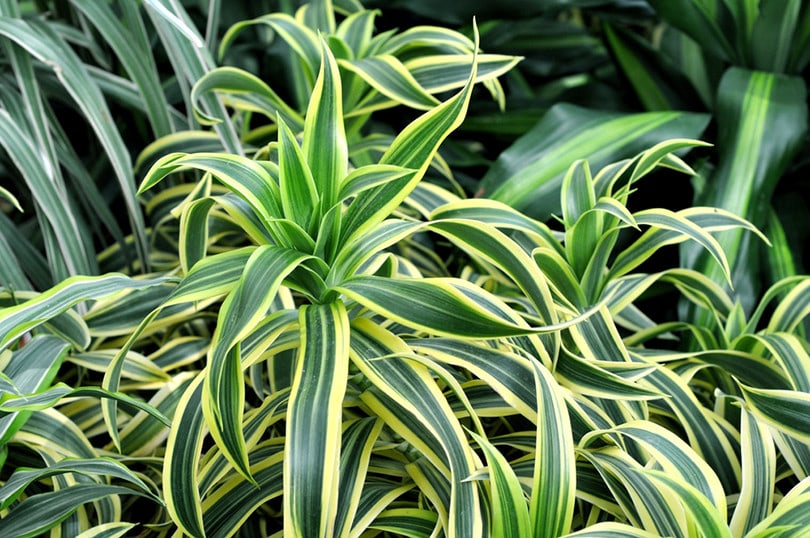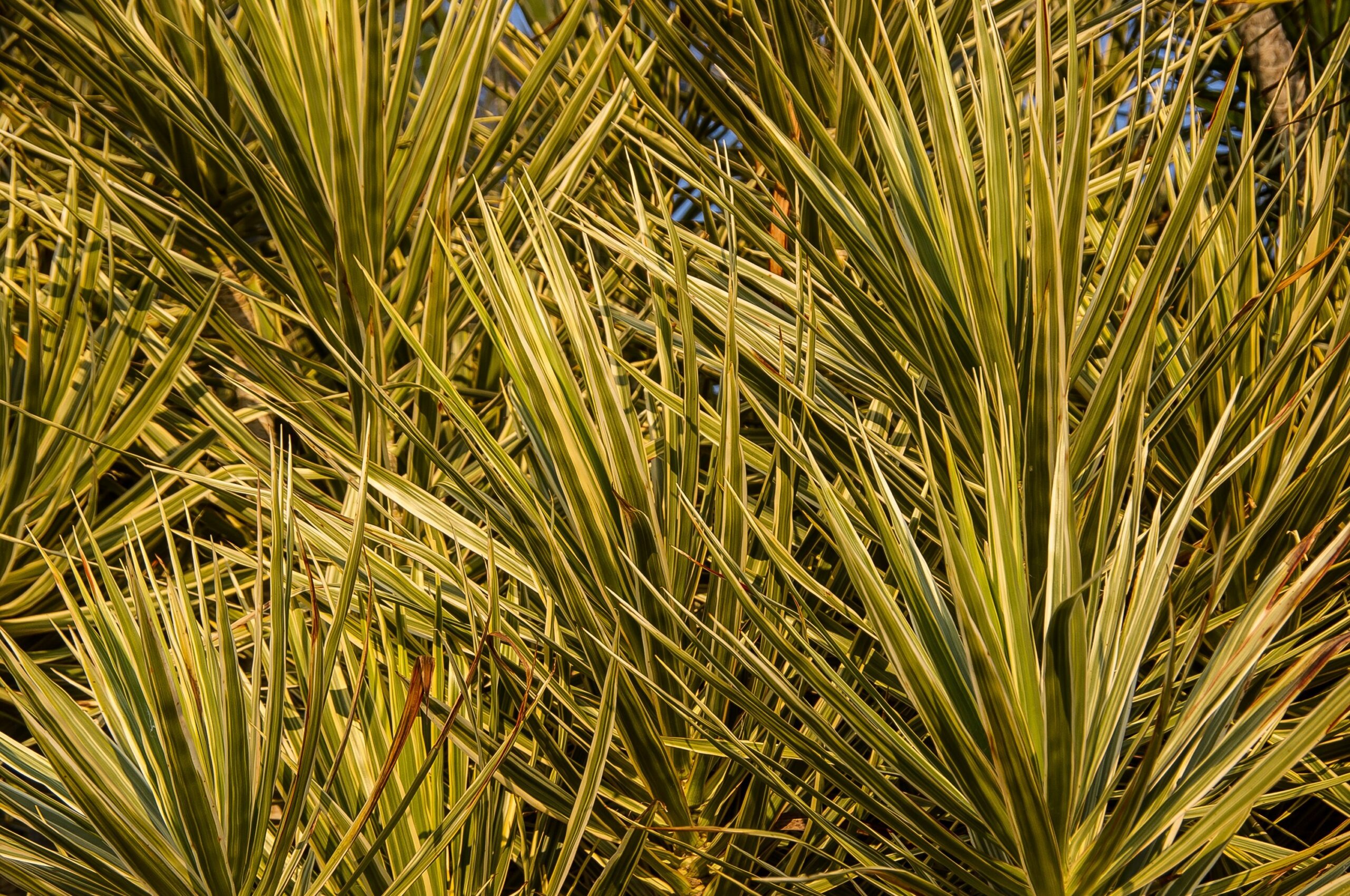How Much & How Often to Water Dracaena: Facts & FAQ
-
Pete Ortiz
- Last updated:

Dracaenas are gorgeous, tropical-looking plants that are incredibly easy to grow and take care of. These plants require minimum effort to thrive, and if you manage to get their watering habit correctly, you will have a tall and healthy Dracaena.
While there are wide varieties of this plant out there, they all mostly require the same conditions to thrive.
Dracaena Characteristics
| Botanical name: | Dracaena |
| Common names: | Dragon plant |
| Family: | Asparagaceae |
| Height: | 2 to 10 feet |
| Spread: | 2 feet |
| USDA Hardiness zones: | 9 to 11 |
| Soil requirement: | Well-draining, rich soil |
| Sun requirement: | Partial Shade |
Appearance

The Dracaena plant is characterized by its distinctive upright, branch-like stems and bushy foliage with narrow, blade-like leaves. There are several different species of Dracaena, which gives this plant many different appearances, especially differences in size. This plant has unique and interesting foliage with glossy green leaves topped with shades of red. The flowers of Dracaena are usually small, coming in red, yellow, or green colors. They produce fruit that resembles berries with one or three seeds.
Varieties
There are many types of Dracaena worldwide, although we will list the most popular varieties and their unique features below.
- Dracaena fragrans: Grows leaves that resemble sweet corn and is commonly known as the Corn Plant.
- Dracaena marginata: This plant, also known as the Dragon Tree, has thin stems with thin arching leaves topped by purple margins. The Dragon Tree has interesting shapes which people can modify to go in desired directions.
- Dracaena godseffiana: This type is a small variety commonly known as Gold Dust Dracaena, with creamy speckled leaves growing spirally around the stems.
- Dracaena reflexa: This type, called Pleomele, has flexible stems and short, thick leaf rosettes.
- Dracaena trifasciata: The Snake Plant has distinctive erect leaves with yellow margins and dark stripes.
- Dracaena surculosa: The Florida Beauty or Spotted Dracaena also has easily recognizable leaves with bright creamy spots on the entire leaf’s surface.
Risks and Diseases
The most common risks for the Dracaena plant are scale insects and mites, although diseases in home conditions are very rare. One thing that Dracaena is very sensitive to is a mineral released from rock into the soil called fluoride. To avoid causing damage to your Dracaena plant, ensure not to add too much perlite to the soil and keep the pH levels neutral, ideally between 6.0 and 6.5. Also, avoid using fertilizers with superphosphate, as it often contains high levels of fluoride.
How Much Water Does Dracaena Need?

When wondering how much to water your Dracaena plant, it is always best to inspect the soil it grows in first. Touch the topsoil to determine whether it is dry and needs watering. If you notice any excess water collecting in the tray, let your plant rest a bit longer without watering. When watering your Dracaena plant, it is essential to water the soil thoroughly and slowly but provide the soil with excellent drainage first. Once you notice the water seeping through the drainage holes, the plant has received enough water.
It is essential to know that Dracaena cannot tolerate constantly damp and soggy soil because its roots are susceptible to root rot. If you are unsure about the water amount to provide to your Dracaena plant, it is better to leave the soil dry than to keep it moist for too long.
How Often to Water Dracaena?
To know how often to water your Dracaena plant, it is again essential to look at the soil’s surface layer. The top layer needs to be entirely dry before the next watering. It is best to ensure the soil is dry in the first 2 to 4 inches to prevent overwatering your Dracaena. If you notice the soil is damp when sticking your finger in the soil, leave your plant without water for another day or two.
Dracaenas usually need watering every week, or once every second week during summer and spring, while some people stretch that out to every fourth week in colder seasons.
Underwatering Issues

While Dracaena are more tolerant to underwatering than too much water, they still cannot survive for too long in dry conditions. When leaving your plant without water for too long, you will slowly start noticing the leaves wrinkling, then becoming crispy. If you see the leaves turn brown towards their ends, this won’t mean the plant is dead, but it needs watering immediately. A common mistake some plant owners make when noticing their plant is too dry is to overwater the plant to correct their mistake. This is another wrong move as it won’t help the plant; instead, it might just suffocate it. When watering an underwatered plant, provide it with as much water as you would during regular maintenance.
Overwatering Issues
Another common mistake when watering Dracaena is providing too much water to the plant. Since the plant has such a tropical look, most people believe it needs frequent watering during the summer, which is not the case. When you notice your plant’s leaves turning pale and limp, it may be time to stop watering it so often.
Another symptom is yellowing or brown leaves that begin falling off. One situation that might be causing this issue is poor soil drainage. If this is a recurring issue, try repotting your plant in a pot with more drainage holes. Try adding rocks to the bottom of the pot as a filtration system.
Conclusion
After learning about the proper way to care for the Dracaena plant, you can go on and help your lovely Dragon plant thrive. These plants need only a bit of regular maintenance to grow strong and healthy, and watering is the first step towards that goal. Once you begin watering Dracaena correctly, you will quickly notice the progress in the plant’s growth.
- How often to water dracaena
- How to care for a Dracaena – Plant care for Beginners
-
How Often to Water Dracaena – Growing Information and Tips
Dracaena | Home & Garden Information Center - Dracaena | Description, Genus, Species, Houseplant, & Facts | Britannica
- Types of Dracaena with Care Guide and Pictures (Identification).
Featured Image Credit: Oksana Lyskova, Shutterstock
Contents


